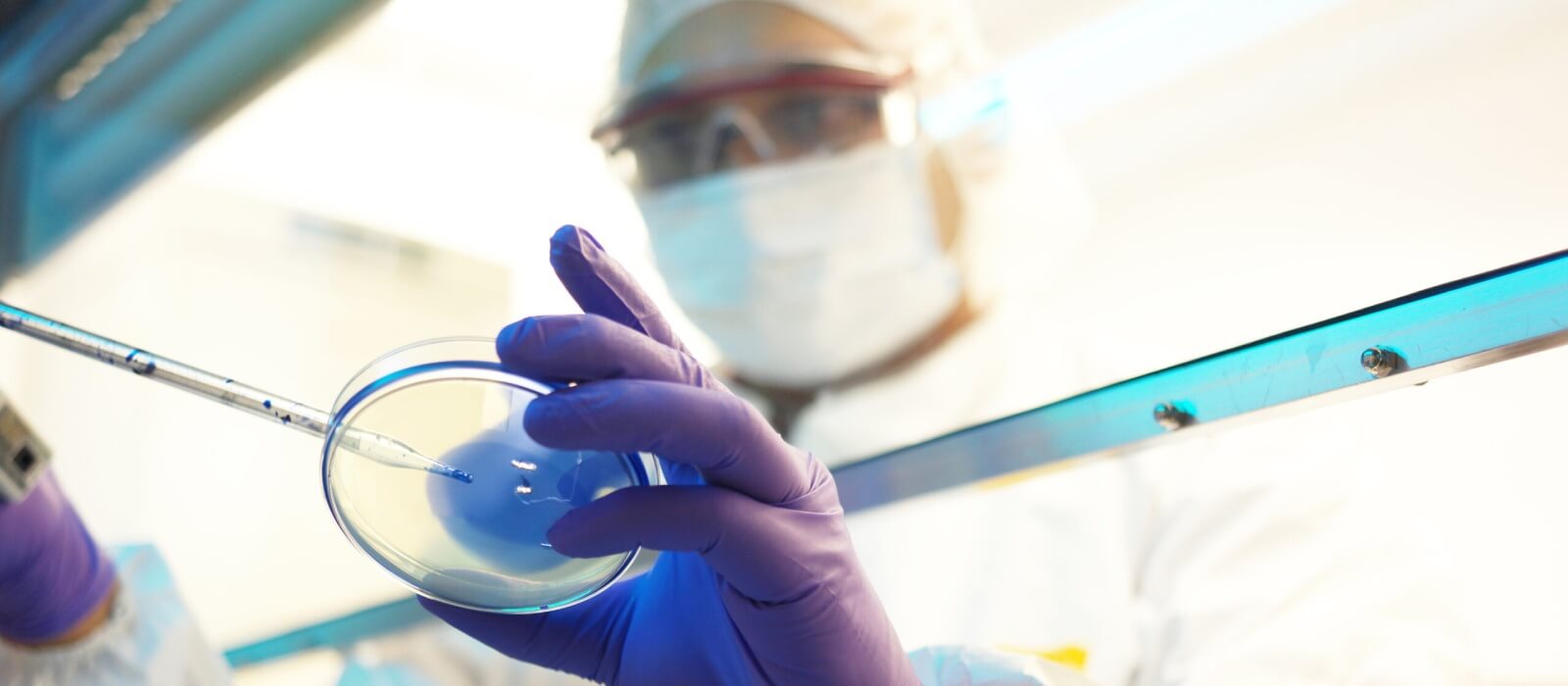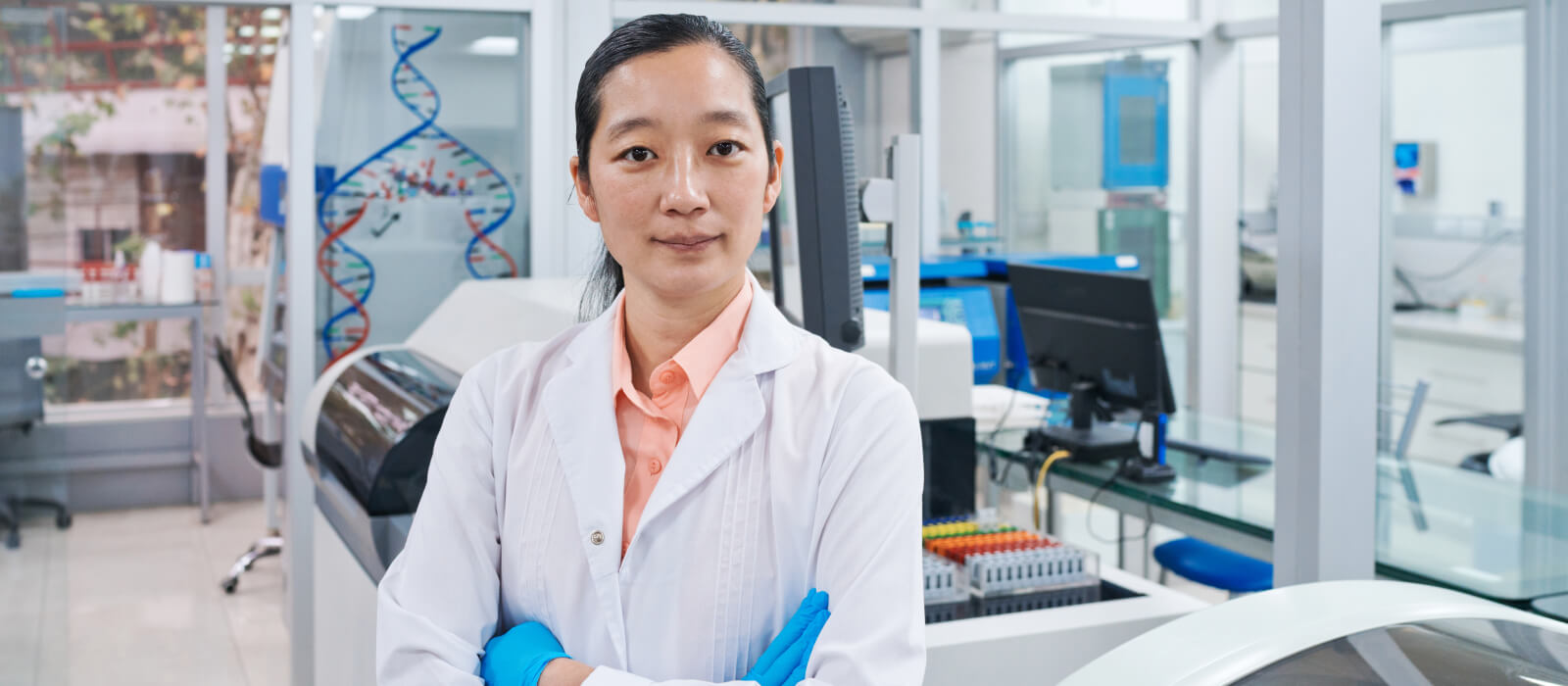Research with SARS-CoV-2: Safety Considerations for BSL-2 and BSL-2+ Laboratories

Research into therapies and vaccines for COVID-19 is exploding across the globe. Laboratories looking to begin research involving SARS-CoV-2, the virus that causes COVID-19, must rapidly assess whether their facilities, policies and training are sufficient to protect their employees and the surrounding community.
SARS-CoV-2 is a new pathogen and we learn more about it every day. Plans and policies for safely conducting research with the virus need to be flexible to accommodate this new knowledge. When working with a new virus, you always want to take a more conservative approach with regard to safety, handling and containment.
ABSA International published a helpful reference chart summarizing Centers for Disease Control and Prevention (CDC) and World Health Organization (WHO) guidance for working with SARS-CoV-2 by categorizing specific laboratory procedures and the appropriate biosafety level (BSL) requirements. The biosafety level is determined through a risk assessment and depends on what materials and procedures are being used.
Start with the Biosafety Risk Assessment
Labs should perform a risk assessment before beginning any new research. As detailed in the CDC’s Biosafety in Microbiological and Biomedical Laboratories (BMBL), the steps of the risk assessment include:
- Review the biological agents being used and identify the hazards associated with each one. The CDC, National Institutes of Health (NIH) and Occupational Safety and Health Administration (OSHA) provide guidance in determining hazards and risks associated with biological materials.
- Identify laboratory procedure hazards, such as sharps use, aerosol-generating procedures, concentrating pathogens, animal work, etc.
- Determine the appropriate biosafety level and select additional precautions as indicated by the risk assessment.
- Evaluate the proficiencies of staff regarding safe practices and the integrity of safety equipment.
- Review the risk assessment with a biosafety professional, subject matter expert and your Institutional Biosafety Committee (IBC).
Each lab should perform their own risk assessment and tailor their policies and procedures to address the biological hazards unique to their research.
Safety Precautions to Consider
BSL-2
Follow biosafety level 2 (BSL-2) procedures when working with biological materials that pose moderate hazards to humans and the environment. Most COVID-19-related research will require additional precautions, but some can be performed in a standard BSL-2 laboratory. For example, some human body fluids, like urine, don’t carry SARS-CoV-2 even if they are taken from someone who has COVID-19. Work with these materials can be conducted at BSL-2. Other COVID-related research activities that can be done at BSL-2 include molecular biology procedures with non-infectious proteins from SARS-CoV-2, vaccine or therapeutic testing that does not involve work with infectious virus, and work with inactive (killed)
SARS-CoV-2.
BSL-2 laboratory space should have lockable doors separating it from non-laboratory space. Ideally, there should be a separate procedure room with a biosafety cabinet to reduce the risk of exposure and cross-contamination between experiments. Clear signage, labeling and storage will ensure that everyone who enters the laboratory is aware of the type and location of biohazards. Sinks for handwashing should be available and kept stocked with soap and paper towels. Additional recommendations for BSL-2 laboratories can be found in the BMBL.
Any procedures that may produce aerosols or droplets should be performed using a biosafety cabinet (BSC) or other aerosol-containment device. Chemical fume hoods, laminar flow benches and biosafety cabinets are all commonly referred to as “hoods,” but they are not interchangeable! Of the three, only a biosafety cabinet will provide protection to the user, the product and the environment. Make sure that your researchers understand which equipment should be used for different processes and why!
Standard personal protective equipment (PPE) requirements at BSL-2 include safety glasses, laboratory coats and disposable gloves. Your lab should have a plan to decontaminate or replace used lab coats and glasses on a routine basis. Researchers should be trained on the correct way to store, don, doff and decontaminate or dispose of PPE. Hand hygiene, particularly after glove removal and before leaving the lab, is key.
While it’s easy to become complacent about safety precautions when working in a laboratory, BSL-2 protocols are designed to protect researchers and the community from moderate biological hazards. While it shouldn’t take a pandemic to remind us that laboratory safety is important, now is a good time to review laboratory safety procedures. If your laboratory is considering COVID-19-related research, use this opportunity to tighten up and enforce all safety protocols in the lab.
BSL-2+
BSL-2+ (also known as BSL-2 enhanced) is not a recognized containment level in biosafety guidance documents such as the CDC’s BMBL or NIH’s Guidelines for Recombinant and Synthetic Nucleic Acid Molecules. Yet its use has been on the rise in recent years due to increased research with emerging infectious diseases. This level is a hybrid of a BSL-2 facility and incorporation of some to all BSL-3 practices.
Most work with human or animal materials that are infected with SARS-CoV-2, including diagnostic samples, can be conducted in a BSL-2 facility. However, extra safety practices are needed to protect workers from potentially infectious aerosols and droplets and for procedures that concentrate the virus.
The practices and procedures that your BSL-2+ laboratory adopts will be specific to your research protocols and will be determined through the biosafety risk assessment. However, here are some best practices for working with materials that potentially contain SARS-CoV-2.
Samples should only be handled inside a BSC, this includes opening containers and packaging samples for storage. Equipment that might generate aerosols, like cell sorters and vortexers, should be placed in a BSC. Equipment that is too large to place in a BSC, such as floor centrifuges, should be equipped with aerosol containment devices, such as sealed rotors. Sealed rotors should be loaded and unloaded in the BSC.
Employ enhanced PPE, such as double-gloving, face masks or shields, disposable lab gowns and disposable sleeve covers, as appropriate. Routine disinfection of surfaces and hand hygiene are crucial.
Ensure that all staff are trained on your workplace’s self-screening and attestation policies and that they know what should be done if they develop COVID-19 symptoms. Review and update existing exposure response plans to ensure that they’re appropriate for a potential SARS-CoV-2 exposure.
All policies and procedures pertaining to your BSL-2+ laboratory should be reviewed by your EHS/Biosafety officers and, if applicable, by employee occupational health. These policies should be made available for employee review. Consider developing checklists, signage and other materials to assist and remind personnel of these policies.
BSL-3
I’ll touch on a few points about BSL-3 laboratories, but they are much more complex and would require a separate post to cover them in any amount of detail. Any work with cultured or concentrated SARS-CoV-2 virus needs to be performed in a BSL-3 laboratory. Among other things, this includes propagating virus, culturing infected cells, and working with cultured virus in vitro or in vivo. BSL-3 laboratories are high-containment facilities that are engineered to completely contain aerosol-transmissible pathogens.
Unless you already have one, you will need to design and construct your BSL-3 laboratory to provide the necessary higher level of containment. This includes making significant infrastructure to existing space to meet the specific requirements for air flow, exhaust, plumbing, security and more. In addition to the physical space, a BSL-3 is also a much more involved regulatory process. Many cities have permitting requirements for BSL-3 facilities that include initial registration, annual permit renewals and regular inspections by the public health department.
Permitting Requirements for Research with SARS-CoV-2 for U.S. Labs
Work with domestic patient samples
Research using patient samples and other clinical specimens requires Institutional Review Board (IRB) review and approval to assure that the rights and welfare of the people the samples were taken from are protected.
Samples from outside the United States
If you are receiving patient specimens or other materials that contain a human pathogen from outside the United States, you need a CDC permit.
Shipping outside your lab (within and outside the United States)
If you are shipping specimens outside the laboratory, the shipper will need to have a current training certificate in U.S. Department of Transportation (DOT) and International Civil Aviation Organization (ICAO) dangerous goods shipping regulations. Category A will be necessary for virus samples and Category B for clinical specimens.
These above are requirements at the federal level. Requirements will vary at the state and local level so you will need to identify what is required in your region. In many regions permits from the local health department are required.
New Viruses Require A Conservative Approach
Working within the appropriate biosafety level, having the necessary safety permits in place, and training staff on procedures, are vital measures to working safely with SARS-CoV-2 and ensuring the integrity of your research. When it comes to new viruses such as SARS-CoV-2, you’ll want to be more cautious with safety measures and containment. Resiliency is also important. It is important to periodically review your practices and procedures as they will likely change as our knowledge of this novel virus continues to evolve.
If you need help determining whether you have the right facility, policies and training in place to safely conduct research with SARS-CoV-2, contact us today to speak with one of our biosafety professionals.
Subscribe
to our blog
"*" indicates required fields




